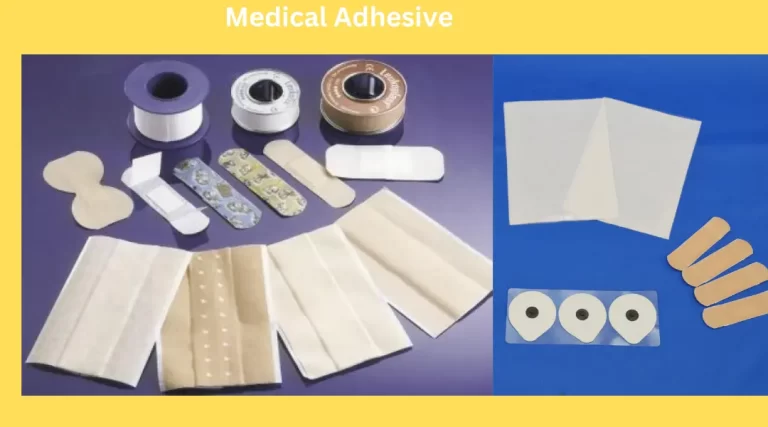Introduction to Automotive Adhesives
In the fast-paced world of automotive manufacturing and repair, finding efficient and reliable ways to join materials is crucial. Automotive adhesives have emerged as a game-changer in this domain, offering several advantages over traditional welding and mechanical fasteners. These powerful bonding agents not only provide structural integrity but also contribute to weight reduction, improved aesthetics, and enhanced vehicle safety.
Let’s dive into this peculiar topic and uncover the taste, health risks, and even unique uses of glue beyond its intended purpose.
In this comprehensive guide, we’ll explore the various types of automotive adhesives, their applications, pros, cons, and essential tips for effective use.
Types of Automotive Adhesives
1. Structural Adhesives
Structural adhesives are designed to provide high-strength bonding, making them ideal for joining load-bearing components in vehicles. Several types of structural adhesives are commonly used in the automotive industry:
- Epoxy Adhesives: Known for their exceptional bonding strength, epoxy adhesives are versatile and can adhere to various materials, including metals, plastics, and composites. They offer excellent chemical and temperature resistance, making them suitable for diverse automotive applications.
- Polyurethane Adhesives: These adhesives excel in providing flexible yet strong bonds, ideal for applications where materials may experience movement or vibration. They are commonly used in windshield installations and panel bonding.
- Acrylic Adhesives: Acrylic adhesives offer a fast curing process and high impact resistance. They are suitable for bonding dissimilar materials, such as metals to plastics.
- Cyanoacrylate Adhesives (Super Glue): Known for their instant bonding capabilities, cyanoacrylate adhesives are commonly used for small-scale repairs and bonding non-porous surfaces.
2. Non-Structural Adhesives
Non-structural adhesives are used for bonding components that do not bear significant loads but require secure and reliable connections. Some common non-structural adhesives used in the automotive industry include:
- Butyl Adhesives: These adhesives are often used for sealing purposes, providing excellent water and air resistance. They are commonly applied to seal car windows and sunroofs.
- Silicone Adhesives: Silicone adhesives are prized for their flexibility, temperature resistance, and waterproof properties. They find applications in sealing and bonding various automotive components.
- Hot-Melt Adhesives: Hot-melt adhesives are thermoplastic adhesives that become liquid when heated and solidify when cooled. They are widely used in the automotive industry for interior trim and fabric bonding.
Automotive Adhesives vs. Welding and Mechanical Fasteners
Choosing the right joining method is essential to ensure the structural integrity and performance of an automobile. While traditional welding and mechanical fasteners have been widely used, automotive adhesives offer several advantages worth considering:
- Enhanced Aesthetics: Automotive adhesives create seamless bonds, eliminating the need for visible welds or fasteners, resulting in a cleaner and more aesthetically pleasing appearance.
- Reduced Weight and Improved Fuel Efficiency: Adhesives are lighter than metal fasteners, contributing to weight reduction, which can enhance fuel efficiency in vehicles.
- Vibration and Noise Dampening: Adhesives provide a cushioning effect that absorbs vibrations and reduces noise, resulting in a smoother and quieter ride.
- Corrosion Prevention: Unlike welding, which can create heat-affected zones susceptible to corrosion, adhesives do not compromise the material’s integrity, leading to improved corrosion resistance.
How to Use Automotive Adhesives
To ensure the best results and lasting bonds, proper application of automotive adhesives is critical. Follow these essential steps:
1. Surface Preparation:
Before applying the adhesive, ensure that the surfaces to be bonded are clean, dry, and free from dust, grease, or contaminants. Proper surface preparation enhances adhesion and ensures the longevity of the bond.
2. Application Techniques:
Automotive adhesives can be applied using various methods:
- Bead Method: Applying adhesive in the form of a continuous bead along one of the surfaces to be joined.
- Spray Method: Using a spray gun to apply adhesive evenly on the bonding surfaces.
- Roll-on Method: Applying adhesive with a roller for precise and controlled distribution.
3. Curing and Drying Time:
Allow the adhesive sufficient time to cure and dry as per the manufacturer’s recommendations. Factors such as temperature and humidity can affect the curing process.
4. Bonding Strength and Testing:
Before subjecting the bonded components to stress or load, verify that the adhesive has achieved the required bonding strength. Conducting appropriate bond testing ensures the reliability of the joint.
Advantages of Using Automotive Adhesives
The use of automotive adhesives offers numerous benefits, making them an increasingly popular choice in the industry:
- Enhanced Vehicle Safety:
Automotive adhesives create uniform and strong bonds, distributing stress evenly across the bonded area. This results in improved vehicle safety and crash performance.
- Weight Reduction and Fuel Efficiency:
As automakers strive to meet stringent fuel efficiency standards, the lighter weight achieved through adhesive bonding contributes to overall fuel economy improvements.
- Improved Aesthetics:
Adhesives eliminate visible welds and fasteners, providing a sleek and aesthetically pleasing finish to automotive components and assemblies.
- Noise and Vibration Dampening:
Adhesive bonds act as effective dampeners, reducing noise and vibrations, thereby enhancing passenger comfort and driving experience.
Disadvantages and Challenges
While automotive adhesives offer numerous advantages, they also come with some drawbacks and challenges to consider:
- High Initial Cost:
Compared to traditional joining methods, the upfront cost of automotive adhesives and the required equipment can be higher.
- Limited Temperature and Chemical Resistance:
Certain adhesives may not perform optimally in extreme temperature conditions or when exposed to certain chemicals.
- Potential Bond Failure Factors:
Inadequate surface preparation, incorrect adhesive selection, or improper application techniques can lead to bond failures.
- Disassembly Difficulties:
Unlike mechanical fasteners, disassembling adhesive-bonded components can be challenging and may require specialized tools and techniques.
Tips and Tricks for Effective Adhesive Use
To ensure successful adhesive bonding, consider the following tips and tricks:
1. Proper Storage and Shelf Life:
Follow the manufacturer’s guidelines for storing adhesives to maintain their effectiveness and extend their shelf life.
2. Mixing Ratios and Pot Life:
If using two-part adhesives, ensure accurate mixing ratios and adhere to the specified pot life to achieve optimal bonding properties.
3. Surface Compatibility Considerations:
Understand the materials being bonded and select adhesives that are compatible with both surfaces.
4. Working in Challenging Environments:
Adhesive performance may vary under extreme conditions; consider environmental factors during the bonding process.
Best Practices for Automotive Adhesive Application
To maximize the benefits of automotive adhesives, adhere to the following best practices:
1. Cleaning and Surface Preparation:
Thoroughly clean and prepare the bonding surfaces to remove contaminants and ensure strong adhesion.
2. Temperature and Humidity Control:
Maintain suitable temperature and humidity conditions during adhesive application and curing to achieve optimal results.
3. Clamp and Fixture Techniques:
Use appropriate clamps or fixtures to hold components in place during the bonding process, allowing sufficient time for the adhesive to cure.
4. Safety Measures:
Adhesive application may involve potentially hazardous substances; follow proper safety protocols and use personal protective equipment (PPE) when handling adhesives.
Common Automotive Adhesive Applications
Automotive adhesives find numerous applications throughout the vehicle manufacturing and repair process:
1. Glass Bonding:
Adhesives are widely used for bonding windshields, sunroofs, and windows to the vehicle body, providing a secure and watertight seal.
2. Interior Trim Installation:
Adhesives are used to attach interior components, such as door panels, headliners, and dashboards, creating a seamless and polished interior finish.
3. Door Panel Assembly:
Automotive adhesives ensure robust bonding of door panels, contributing to the overall structural integrity of the vehicle.
4. Bumper Repair and Attachment:
In bumper repair and replacement, adhesives offer a reliable and aesthetically pleasing alternative to traditional welding or riveting methods.
5. Windshield Sealant:
Adhesives play a crucial role in sealing windshields, preventing water leaks and ensuring passenger safety.
Environmental and Regulatory Considerations
As the automotive industry embraces more sustainable practices, environmental considerations are becoming increasingly vital:
1. VOC Emission Standards:
Adhesive formulations that comply with volatile organic compound (VOC) emission standards contribute to a healthier and greener environment.
2. Recycling and Disposal:
The automotive industry is exploring ways to improve the recyclability of vehicles, and choosing environmentally friendly adhesives can aid in this effort.
Case Studies: Successful Automotive Adhesive Implementations
To highlight the practical applications of automotive adhesives, let’s delve into some real-world case studies:
1. Leading Automobile Manufacturers’ Practices:
Prominent automakers have integrated adhesive bonding into their production processes, demonstrating the effectiveness and versatility of automotive adhesives in various vehicle components.
2. Real-World Repair and Restoration Projects:
From minor repairs to extensive restorations, automotive adhesives have proven instrumental in achieving seamless and durable repairs.
Conclusion
Automotive adhesives have revolutionized the automotive industry by offering advanced bonding solutions that enhance vehicle performance, safety, and aesthetics. As the demand for lightweight, fuel-efficient, and aesthetically pleasing vehicles grows, the use of adhesives is expected to continue expanding.
Advancements in adhesive technology will likely lead to even more innovative applications and increased sustainability in the automotive sector. Embracing the strengths and mitigating the challenges of automotive adhesives will drive the industry towards a safer, greener, and more efficient future.



